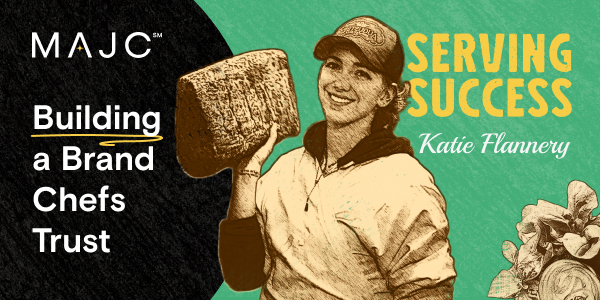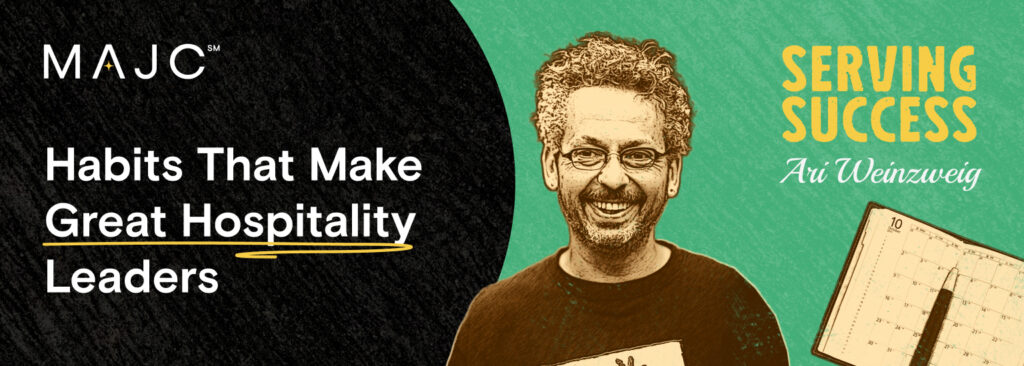How to Build a High-Performing Restaurant Team Culture That Lasts

Here’s how the best chefs and operators intentionally build great restaurant culture and keep it strong for the long haul.
Culture isn’t a buzzword. It’s the unspoken agreement between every person on your team about how to show up, what matters, and how to treat each other. It shapes retention, your guest experience, and your bottom line.
We cover this topic often on Restaurant Ready, our podcast about building purposeful, profitable hospitality businesses. All the quotes in this article are pulled directly from our conversations with chefs, operators, and leaders across the industry.
“Culture isn’t what you say once at orientation. It’s what you reinforce every day, in every pre-shift, every decision,” said Kevin Boehm of Boka Restaurant Group.
The best restaurant teams aren’t just high-performing. They’re rooted in shared values, trust, and consistency. And that kind of culture doesn’t just happen. It’s built. Here’s how.
1. Lead with Clarity and Consistency
Strong culture starts at the top. That means clearly defining your values and reinforcing them through action, not just the employee handbook.
Chef Sarah Grueneberg told us, “You can’t say one thing and do another. If you talk about accountability, you have to model it. Every day.”
Chef Alex Stupak echoed this idea, noting, “Culture comes from clarity of identity. Are you clear about who you are as a restaurant? Because your team is listening.”
When leadership shows up consistently and communicates clearly—about values, identity, and expectations—it sets the tone for the whole operation.
For chef Ben Shewry, culture isn’t just important, it’s foundational. He sees it as the invisible framework that guides how teams behave, especially in the hardest moments.
“Culture is everything. It’s the quiet rules of how we behave when no one’s watching. And that starts with how leadership treats people on the hardest days,” he said.
If you’re not clear and consistent, your team will be confused and culture won’t take hold.
2. Hire for Heart, Not Just Hands
A lasting team culture starts with hiring people who reflect your values, not just your staffing needs.
“We hire for heart. Skills can be taught, but attitude is everything,” said chef Maria Mazon.
Chef Missy Robbins looks for signs of initiative and ownership even during the hiring process, seeing them as early indicators of long-term potential. Others, like chef James Galbraith, emphasize that hiring isn’t just about who you bring in. It’s about how you help them grow once they’re through the door.
Your hiring process is your first culture-building tool. Use it wisely.
3. Empower with Ownership
A healthy culture doesn’t mean everyone’s happy all the time. It means people feel respected, heard, and trusted to do great work. Chef Missy Robbins told us that when you give people ownership, they rise to the occasion and start thinking like owners.
Chef Kenny Gilbert takes that a step further, emphasizing that culture isn’t just top-down. It’s inside-out. True culture shows up when team members mentor each other, support one another, and take pride in the group’s success.
Empowerment isn’t just about handing off responsibility. It’s about showing people that you trust them to lead in their own way. That might look like clearly defined roles and expectations, opportunities for cross-training and mentorship, input on key decisions, or visible paths for growth and advancement.
Empowered teams don’t just perform better; they stick around longer.
4. Make Feedback and Celebration a Habit
Feedback shouldn’t only happen in reviews. And wins don’t have to be big to be worth celebrating. Chef Sean Sherman reminded us that acknowledging the little victories is what keeps teams motivated and connected.
This kind of positive reinforcement builds more than morale. It creates rhythm. When your team gets used to giving and receiving feedback, and celebrating progress (not just perfection), it builds trust, clarity, and momentum.
And it has to go both ways. Culture deepens when leaders invite feedback from their team and treat it like what it is: valuable, actionable insight, not a threat.
Celebrate progress, and build the habit of honest feedback. That’s how culture grows.
5. Build Culture Beyond the Kitchen
Strong team culture doesn’t stop at the pass. It’s not just about what happens during service. It’s about what you stand for.
Chef Manu Buffara put it simply: culture is community. And that includes your team, their families, and their well-being. It shows up in how you support working parents, how you design schedules, how you communicate during busy moments, and how you respond when someone’s struggling. It’s the small, consistent gestures that signal you matter here.
Chef Karen Akunowicz takes a long view, saying she wants her team to feel like they can grow with her. For her, culture is about showing people they’re not just clocking in for a shift. They’re building a career.
Culture doesn’t end with your team’s shift. It shows up in how you treat the whole person.
6. Protect Culture Like It’s Your Best Asset (Because It Is)
Culture isn’t a one-time project. It needs ongoing care. That means naming and correcting misalignment when it happens. Checking in with your team beyond just productivity. Owning it when leadership misses the mark and then resetting the tone.
Chef Gavin Kaysen said it best: he doesn’t always have the answers, but he listens and commits to figuring it out with his team. That kind of humility builds real trust.
It also means creating a sense of psychological safety. Chef Gerard Craft warned that if people don’t feel safe speaking up, then you don’t have culture, you have compliance. And compliance won’t carry a team through the tough days.
Culture is fragile. Protect it with your actions, not just your intentions.
Bottom Line
Great food and tight systems won’t save a restaurant with a broken culture. The most successful chefs and operators know this and treat culture like the operational asset it is.
Start with values. Lead with consistency. Hire for heart. Empower your team. Celebrate the wins. Grow together.
FAQ
What is restaurant team culture?
Restaurant culture is the shared set of values, behaviors, and expectations that shape how your team works together and treats one another, from the kitchen to the floor.
How do I know if my restaurant culture is broken?
High turnover, low engagement, fear of feedback, or unclear expectations are signs that your culture may need work. If your team seems disconnected, it’s time to reassess.
What are examples of strong culture in restaurants?
Clear communication, supportive leadership, opportunities for growth, and a strong sense of purpose all point to healthy culture. When your team feels seen and valued, culture strengthens.
Want more real-world strategies from chefs who’ve built lasting culture? Join the MAJC Community and get grounded in what really works.
At MAJC, AI helps us organize thoughts and speed up workflows, but every article is shaped, refined, and approved by real people who live and breathe this industry. We think honesty (like hospitality) works best when it’s real.


